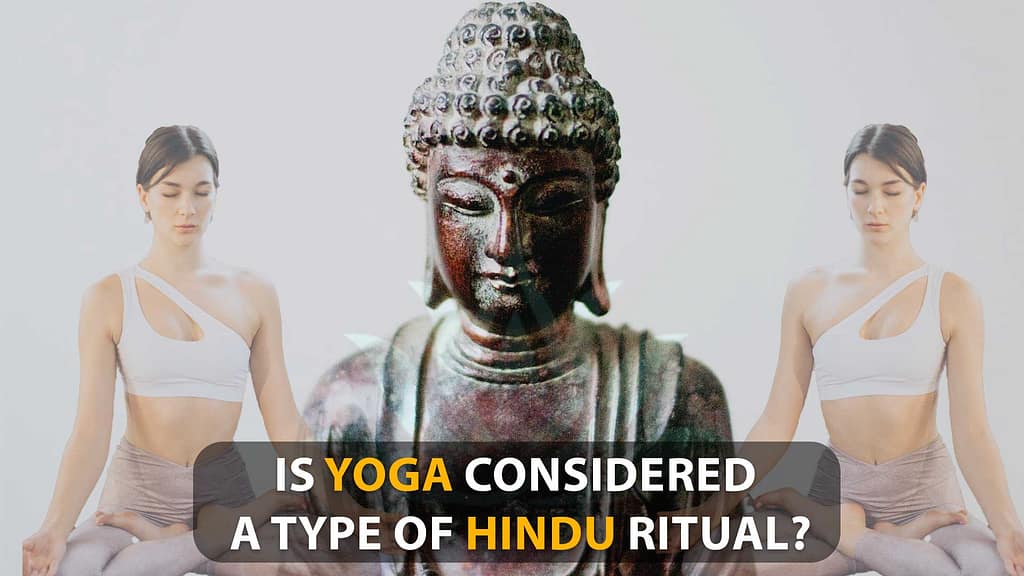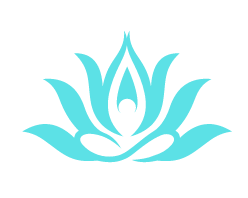Is Yoga Considered A Type Of Hindu Ritual? – Separating Myth from Reality 2023

Is Yoga Considered A Type Of Hindu Ritual?
Yoga is a universally accessible spiritual practice with Hindu philosophical roots that does not need someone to convert to a different faith or face other forms of coercion. Asana, which literally translates to “pose, posture, or manner of sitting,” is one of the components of yoga, if the most physically focused one.
It is hard to say how old Yoga is; People believe that Yoga started around 5,000 years ago or even earlier. The oldest written records of Yoga are in the Vedas, ancient Indian texts from around 1500 BCE.
Yoga is a practice that involves both the body and mind. That may be done in any environment, regardless of religion or culture. Numerous yoga studios and practitioners provide lessons covering the asanas (physical postures) and pranayama (breathing methods), excluding any spiritual or religious elements.
Additionally, Yoga has been modified and adjusted in several ways to fit diverse cultural and religious situations. In place of Hindu mantras or Sanskrit chanting, Christian yoga programs incorporate biblical teachings and prayers.
Similarly, secular Yoga emphasizes Yoga’s stress-relieving, mindfulness, and health benefits without religious or spiritual overtones.
Why is Yoga related to Hinduism nowadays?

Yoga is a technique that is thousands of years old. Yoga pre existed when the facts about the foundation of Hinduism were discovered. But generally, people think that Yoga originated from Hinduism. The yogis who taught and spread Yoga were mainly from India.
They introduced Yoga to the modern world. The terms used by these yogis for various yoga exercises were from Hindi and Sanskrit. Therefore, People generally think that Yoga originated from Hinduism, or it people believe that it is part of Hinduism.
Read:
Should I Do Yoga Before Or After Walking? – What’s The Best Approach? 2023
Different chants of Hinduism in Yoga

Namastay
Namaste is one term that yogis frequently use in yoga teachings. The Hindus use this salutation. Namaste is a technique to express respect and the idea that you are on an equal footing with another person; it is not only a superficial gesture or a word.
Nowadays, namaste is often used in a situation unrelated to its original function. “Namaste” may be defined simply as “The divine in me respects the divine in you.”
Om
Om, the primal sound of the universe, represents all creation. Some believe it to be the primordial sound that includes all sounds. Yogis chant “Om” to tap into cosmic energy and consciousness.
It can calm and focus the mind. Repetition of the sound induces a meditative state and blocks away distractions, helping practitioners to focus more.”Om” has a vibrational frequency that resonates with the body and psyche.
Chanting “Om” provides harmony and balance to the practitioner and environment. Chakras are yogic energy centers. Each chakra links to particular elements, sounds, and vibrations. Reciting “Om” activates and aligns these chakras, allowing energy to flow freely. Hinduism, Buddhism, and Jainism respect “Om.”
It symbolizes ultimate reality, the connection of the individual ego with universal consciousness, and the divine nature of all beings. Chanting “Om” during Yoga helps reinforce this spiritual connection and deepen one’s spiritual practice.
Asato Ma Sadgamaya
“Asato Ma Sadgamaya” in Sanskrit means “Lead me from the unreal to the real” or “Lead me from darkness to light.” It’s typically chanted for spiritual direction. The mantra longs for knowledge, truth, and emancipation. It encourages enlightenment and the search for truth.
Guru Mantra
Guru Mantra honors spiritual teachers. It honors the guru’s guidance. The mantra honors the guru as celestial wisdom and seeks spiritual enlightenment and ignorance elimination. Chanting the Guru Mantra strengthens a guru-student relationship and provides blessings.
Shanti Mantra
Sanskrit peace prayer Shanti Mantra. Religious ceremonies, meditation, and Yoga often begin or end with it. The phrase invokes divine blessings and promotes world peace. It seeks personal and global peace.
Read:
Can We Do Yoga Without Wearing A Bra? – Benefits And Disadvantages Of Wearing Bra In 2023
Yoga poses that are considered Hindu style

- Tadasana (Mountain Pose)
- Adho Mukha Svanasana (Downward Facing Dog Pose)
- Surya Namaskar (Sun Salutation)
- Padmasana (Lotus Pose)
- Natarajasana (Lord of the Dance Pose)
- Hanumanasana (Monkey Pose or Split Pose)
- Gomukhasana (Cow Face Pose)
- Garudasana (Eagle Pose)
- Matsyasana (Fish Pose)
Can you separate yoga practice from om, namaskar, and the Hindu spiritual and cultural values?
Yes, it is easy to differentiate yoga practice from particular Hinduism-related concepts and symbols like “Om,” “Namaskar,” and specific religious and cultural ideals. Yogis utilize these components commonly utilized in traditional yoga practices. Yoga does not need them.
Is it insulting Hinduism to practice Yoga without at least studying the religion?

Yoga can practice without first understanding Hinduism; this only sometimes consider disrespecting the religion. Even while Hinduism has a close connection with Yoga and the practice itself has its roots in Hindu thought, yoga practitioners don’t need to know Hinduism to engage in yoga practice.
Studying Hinduism or the philosophical books associated with Yoga, such as the Yoga Sutras of Patanjali, can provide extra context and insights.
However, if someone wishes to develop their understanding of Yoga and explore its spiritual or philosophical elements, studying Hinduism or the philosophical literature linked with Yoga is the best way.
It is necessary to consider Yoga with respect for its roots and to be open to learning about its cultural and historical foundations; nevertheless, it is not a requirement to study Hinduism to practice Yoga. It is vital to approach Yoga with respect for its roots and to be open to learning about its cultural and historical roots.
Read:
Is Yoga Aerobic Or Anaerobic? – Difference Between 2023
Conclusion
Yoga is centuries-old. Yoga existed before Hinduism. It is often associated with Hinduism. Most yoga teachers were Indian. They modernized Yoga. These yogis used Hindi and Sanskrit for yoga practice. Thus, we consider Yoga a part of Hinduism or its roots.
Yoga is a varied discipline with several applications and interpretations. People practice Yoga for various purposes, including cultural appreciation, spiritual inquiry, mental health, and physical fitness. Because of this flexibility and customization, you can do Yoga in a way that suits your unique interests and beliefs.
Frequently Asked Questions: (FAQs)
Q: Yoga without spirituality or philosophy?
A: Yes. Many people do Yoga for its physical benefits, like flexibility, strength, and relaxation. You can practice Yoga primarily for physical fitness. Customization is possible.
Q: Is Yoga for all faiths?
A: Yoga is for all faiths. People of other religions might adopt its physical, mental, and spiritual aspects. Yoga can improve physical health, emotional well-being, stress reduction, and mindfulness independent of religion.
Q: Is there any Non-religious Yoga?
A: There are secular and non-religious yoga styles. These styles of Yoga emphasize asanas and pranayama but not religion or spirituality. These approaches, known as “fitness yoga” or “yoga for wellness,” are available to non-religious people seeking the physical and emotional benefits of Yoga.
Related Posts
- Is Yoga Meant To Worship Gods? – Why Yoga Is Misunderstood As Worship? In 2023
- Is Yoga Pagan? – Truth Behind Yoga In 2023
- Is Meditation A Form Of Worship? – Difference Between Worship And Meditation In 2023
- Which Direction Is Best For Meditation – Effects And Benefits Of Levitation In 2023
- Tingling Sensation Between Eyebrows During Meditation – What Is The Third Eye Sensation? in 2023
- Why Do I Feel Sick After Yoga? – Understanding The Causes And Solutions In 2023






